#1 Trusted, Reliable, Local Roofer
GUTTER REPAIR
Providing Reliable & Trusted Residential & Commercial New Roof, Roof Installation & Roof Repairs.
We have expert roofers with over 25 years of experience.We are licensed and insured
GET YOUR FREE QUOTE TODAY!!
The Essential Guide to Gutter Repair: Maintaining Your Home’s Water Management System
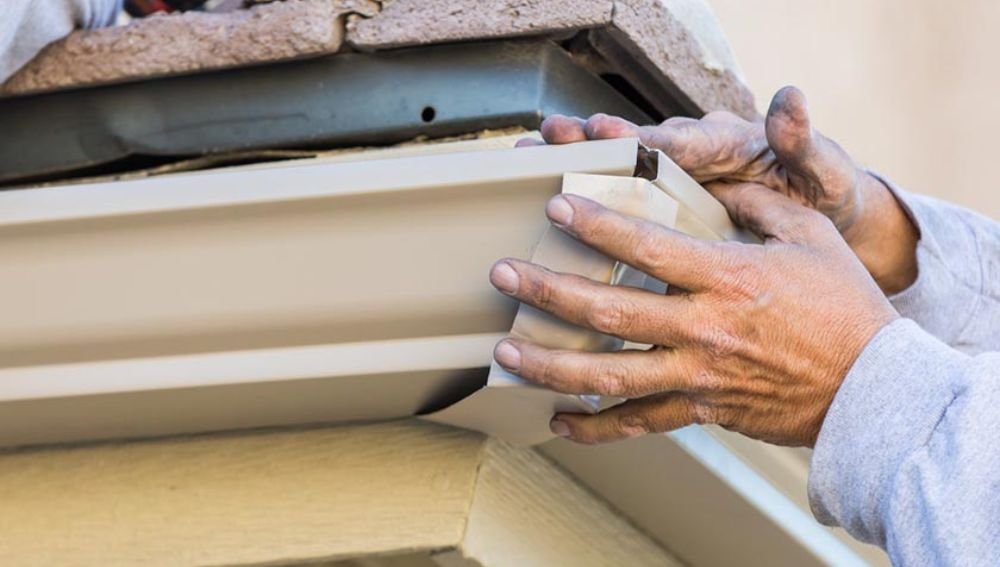
The health and maintenance of your home can be greatly improved with a well-functioning gutter system. Gutters play a vital role in managing rainwater and directing it away from your foundation, preventing potential water damage. As gutters age, they can become damaged or clogged, causing water overflow, leaks, and other problems. This thorough overview explains why gutter repair is crucial, how to solve common gutter problems, and what you can do to maintain optimal gutter performance.
The Importance of Gutter Repair
Gutters act as a protective shield, channeling rainwater away from your home’s foundation, walls, and landscaping. When gutters are damaged or not functioning properly, water can accumulate and cause significant damage, including:
Foundation Issues: Excess water that isn’t properly diverted away from the foundation can seep into the soil, causing it to expand and contract. A weakened foundation can lead to cracks and instability, compromising your home’s structural integrity.
Basement Flooding: If gutters are clogged or damaged, water can overflow and find its way into your basement. This can result in costly water damage, mold growth, and health hazards.
Roof Damage: When gutters are clogged with debris, water can accumulate on the roof, causing leaks, rot, and deterioration of the shingles or roofing materials. This can lead to costly repairs or even premature roof replacement.
Landscape Erosion: Without proper water management, excessive rainwater can erode the soil around the foundation and damage your landscaping.
How Gutters Can Cause Foundation Issues
Gutters can cause foundation issues if they are not properly functioning or if they are not installed correctly. Here’s a more detailed explanation of how gutters can contribute to foundation problems:
Improper Diversion of Water: The primary function of gutters is to collect rainwater from the roof and divert it away from the foundation of the house. If the gutters are clogged, damaged, or not appropriately sloped, they may not effectively channel water away from the foundation. Instead, the water can overflow or accumulate near the foundation, leading to pooling.
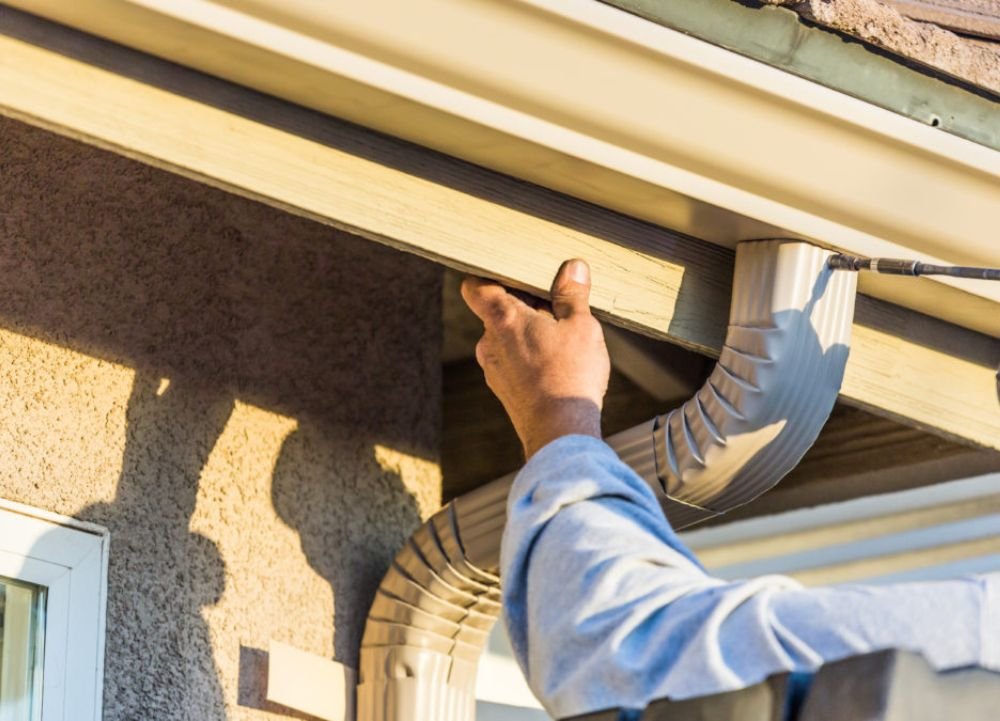
Soil Expansion and Contraction: When excess water from the gutters seeps into the soil surrounding the foundation, it can cause the soil to expand. This expansion leads to increased pressure against the foundation walls. Conversely, during dry spells, when gutters are not effectively diverting water away, the soil can dry out and contract. This contraction can cause the soil to pull away from the foundation, creating gaps or voids.
Cracks and Structural Instability: The constant cycle of soil expansion and contraction due to improper water diversion can cause the foundation to shift. Over time, this movement can lead to cracks in the foundation walls, floors, or basement. These cracks compromise the structural integrity of the foundation, potentially leading to further structural issues throughout the entire house.
To prevent foundation issues caused by gutters, it is crucial to ensure that gutters are properly installed, correctly sloped, and in good working condition. Regular maintenance, such as cleaning gutters to remove debris and checking for any leaks or damage, is essential to ensure their effectiveness.
In terms of cost, the implementation of proper gutter systems and maintenance is relatively inexpensive compared to the potential costs of foundation repairs. Regularly cleaning and maintaining gutters can help prevent foundation issues in the long run.
The popularity of implementing gutter systems to prevent foundation issues is widespread among roofers and homeowners. Most professional roofers recognize the importance of properly functioning gutters in protecting the foundation of a home. They often recommend installing gutters with the appropriate slope and size, along with regular maintenance, to avoid potential foundation problems.
Professionals can diagnose foundation issues, such as cracks and uneven floors, and recommend the best course of action. They can also provide guidance on maintaining and improving your gutter system to prevent further foundation issues.
How Gutters Affect Basement Flooding
When gutters are clogged or damaged, there are several ways they can contribute to basement flooding, leading to water damage, mold growth, and health hazards. Here is a detailed explanation of how gutters can cause these issues:
Clogged Gutters: Gutters are designed to collect rainwater and direct it away from your home’s foundation. However, if gutters are clogged with leaves, debris, or other obstructions, they can prevent water from flowing freely. As a result, water can accumulate in the gutters and overflow, bypassing the downspouts. This overflowing water can then find its way into your basement through cracks in the foundation or gaps around windows and doors.
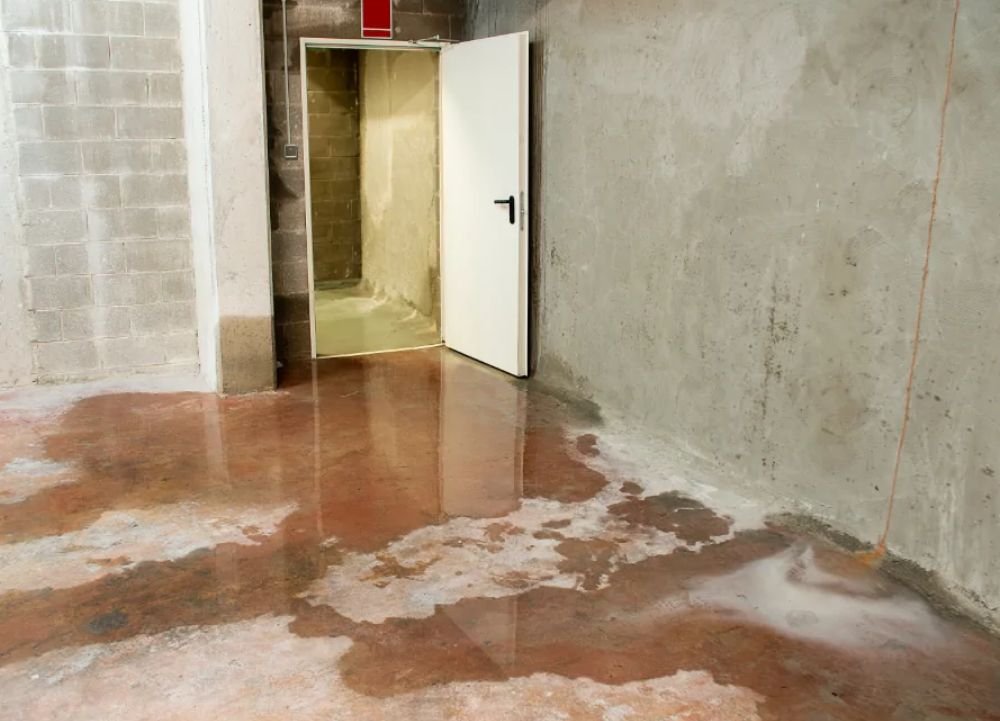
Damaged Gutters: Gutters that are damaged or have cracks, holes, or loose connections can also contribute to basement flooding. In these cases, water may not be properly channeled away from your home. Instead, it can seep through the damaged areas and flow down the exterior walls, eventually making its way into the basement.
Downspout Issues: Downspouts play a crucial role in diverting water away from your home’s foundation. If downspouts are not properly connected to the gutters or if they are damaged, water may not be effectively directed away. As a result, water can pool near the foundation, increasing the risk of basement flooding.
Soil Saturation: When gutters are unable to properly channel water away from your home due to clogs or damage, excessive water can saturate the soil around the foundation. This can lead to an increase in hydrostatic pressure against the foundation walls. Over time, this pressure can cause water to seep through cracks and other vulnerabilities, leading to basement flooding.
The consequences of basement flooding caused by clogged or damaged gutters can be significant. Water damage to walls, flooring, and belongings stored in the basement can result in costly repairs or replacements. In addition, the presence of excess moisture can create an ideal environment for mold growth. Asthmatics, allergy sufferers, and people with other respiratory conditions should stay away from mold because of its ability to spread quickly and release harmful spores.
To prevent basement flooding and the associated water damage, mold growth, and health hazards caused by clogged or damaged gutters, regular maintenance is crucial. This includes cleaning gutters and downspouts to remove debris and checking for any damage or clogs. It’s also important to ensure that downspouts direct water several feet away from the foundation to prevent pooling near the basement walls.
By addressing gutter issues promptly, homeowners can mitigate the risk of basement flooding, protect their property from water damage and mold growth, and maintain a safe and healthy living environment.
Gutter Malfunctioning Roof Damage
Clogged gutters can cause roof damage due to water accumulation and other problems when they become clogged with debris. Here is a detailed explanation of how clogged gutters can cause roof damage:
Water Accumulation: Gutters are designed to collect and channel rainwater away from the roof. However, when gutters are clogged, water cannot flow freely and starts to accumulate. The excess water can sit on the roof, especially during heavy rainfall or melting snow, causing water pooling and prolonged exposure to moisture.
Roof Leaks: As a result of clogged gutters, roofs can be prone to water accumulation leading to the deterioration of shingles and tiles. It is possible for leaks to develop over time as a result of this. Water can seep through cracks, gaps, or weakened areas in the roofing system, causing water infiltration into the attic or living space below.
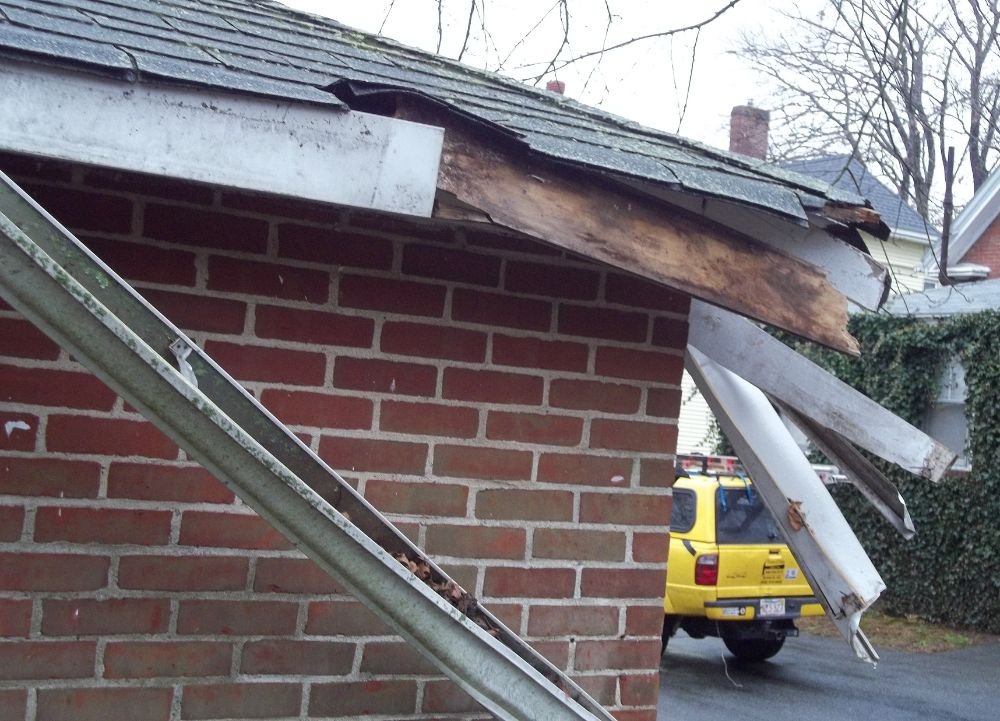
Rot and Decay: A clogged gutter can cause water to accumulate on the roof, causing the underlying roof structure, such as rafters, trusses, or deck, to rot and decay. The constant presence of moisture creates an ideal environment for wood-destroying organisms like fungi, leading to deterioration and weakened structural integrity of the roof.
Ice Dams: In colder climates, clogged gutters can contribute to the formation of ice dams. When gutters are filled with debris, water cannot flow properly and can freeze, creating ice dams along the roof’s edge. As these ice dams melt, water can backup under the shingles and cause water infiltration, leading to roof damage and potential water damage to the interior of the house.
Fascia Damage: Gutters are typically attached to the fascia, which is a board running along the roofline. Debris-clogging gutters can cause the gutters to sag or pull away from the fascia due to the additional weight and moisture. This can result in damage to the fascia, such as rot or deterioration, compromising its ability to support the gutter system and protect the roof.
It can be quite costly to fix these issues, or even to replace a roof completely. This can be a significant financial burden on homeowners.
To prevent roof damage caused by clogged gutters, regular maintenance is essential. This includes cleaning gutters and downspouts, removing debris, leaves, and other obstructions that can impede water flow. By keeping gutters clear and functioning properly, you can ensure rainwater is effectively directed away from the roof, minimizing the risk of roof leaks, rot, and other forms of damage.
How Do Gutters Prevent Landscape Erosion
Gutters play a crucial role in managing rainwater and preventing landscape erosion. When gutters are not functioning properly or are absent, excessive rainwater can cause several issues that contribute to landscape erosion. Here is a detailed explanation of how gutters can cause landscape erosion:
Uncontrolled Water Flow: Gutters are designed to collect rainwater from the roof and channel it away from the foundation and landscaping. When gutters are clogged, damaged, or non-existent, water can overflow and flow directly down the exterior walls or drip off the roof, bypassing the gutters. This uncontrolled water flow can result in concentrated streams of water hitting the ground, which can erode the soil and disrupt the natural drainage patterns.
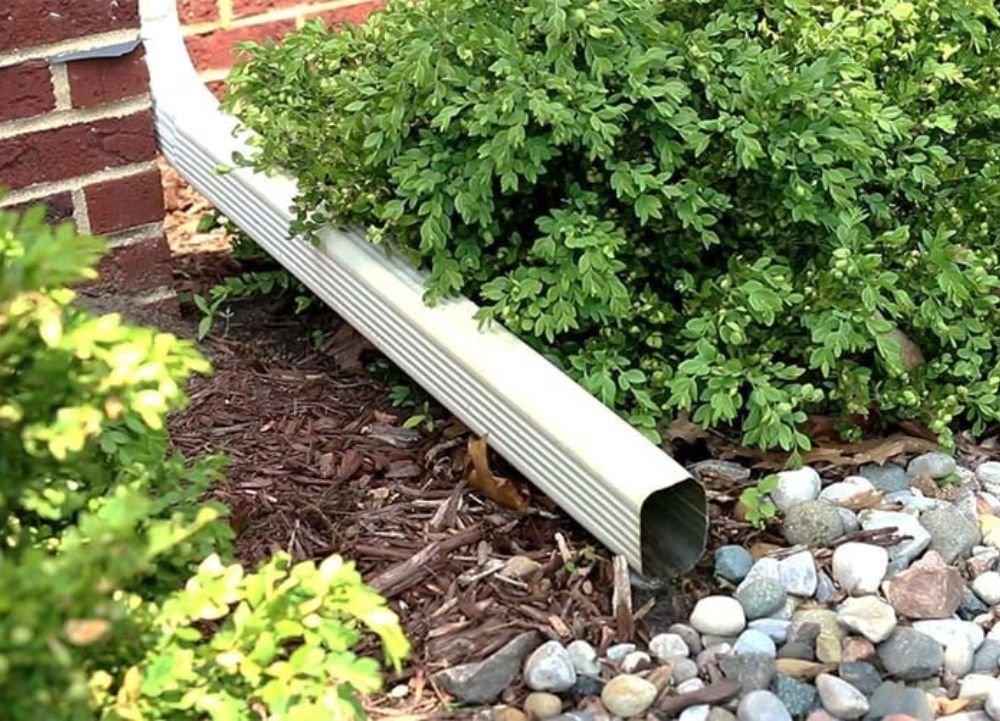
Foundation Runoff: Without gutters, rainwater can pour directly off the roof and onto the ground near the foundation. This excessive water runoff can saturate the soil around the foundation, leading to soil erosion. Erosion can compromise the stability of the foundation and cause structural damage by creating voids or gaps around it.
Downspout Placement: Properly functioning gutters direct water to downspouts, which should extend away from the foundation to prevent water from accumulating near the house. However, if the downspouts are not correctly positioned or are missing altogether, water can collect near the base of the house. In turn, this can accelerate landscape erosion and cause damage to nearby plants, trees, and other landscaping features due to excessive moisture in the soil.
Poor Grading and Drainage: Gutters work in conjunction with the grading and drainage of your property to manage rainwater effectively. A clogged gutter or one that isn’t working properly can lead to excess water accumulating in undesirable places. You may experience soggy or waterlogged areas in your yard due to poor drainage. A surplus of water can lead to erosion of the topsoil and create injury to plants, flowerbeds, and lawns.
Runoff Patterns: Gutters help control the flow of rainwater and direct it away from vulnerable areas. When gutters are absent or malfunctioning, the natural flow of rainwater can change, creating new runoff patterns. These altered runoff patterns can redirect water towards areas that are not designed to handle excessive water, causing erosion, water pooling, and damage to the landscaping.
To prevent landscape erosion caused by inadequate gutters, it is important to regularly maintain and clean your gutters, ensuring they are free from debris and functioning properly. You should also properly position and extend downspouts away from the foundation, directing water towards appropriate drainage channels or landscaping features designed to handle excess water. Additionally, maintaining proper grading and drainage on your property can further mitigate the risk of landscape erosion.
By addressing gutter issues and implementing proper water management practices, you can protect your landscaping from erosion, preserve the integrity of your property’s foundation, and maintain a visually appealing outdoor space.
Common Gutter Problems
To effectively address gutter repair, it’s essential to be aware of common issues that can arise. Let’s look at a few of the most common problems homeowners complain about:
Clogged Gutters: A buildup of leaves, twigs, and other debris can impede water flow in gutters. Regular gutter cleaning is necessary to prevent clogs and ensure proper water drainage.
Leaking Gutters: Over time, gutters can develop cracks, holes, or separations at the joints. These leaks can lead to water overflow and potential damage to your home’s exterior.
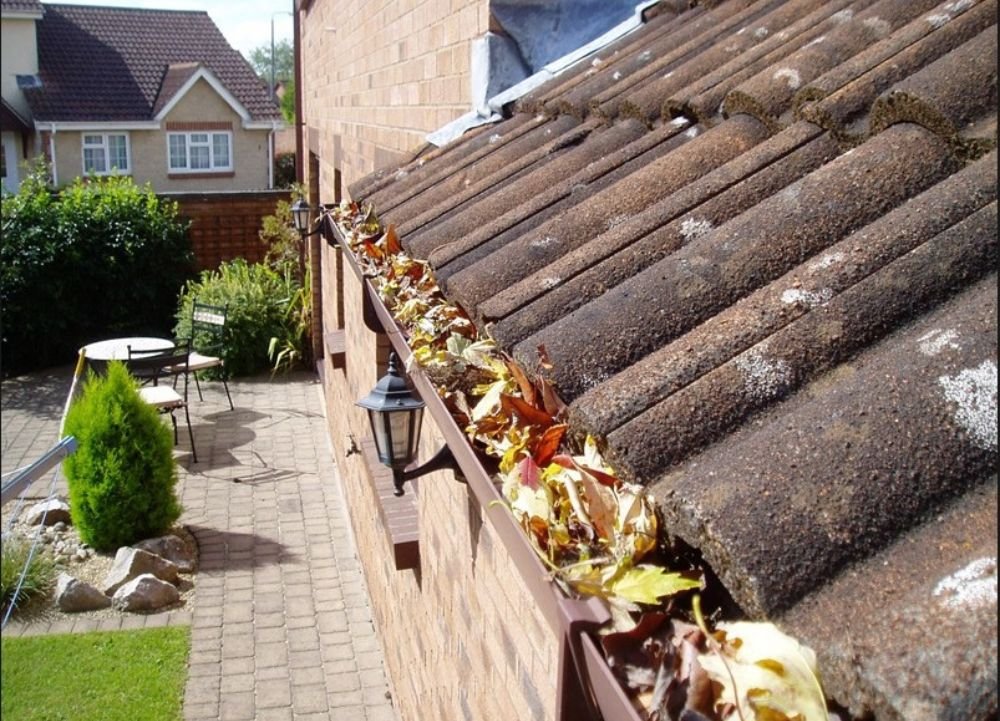
Sagging or Misaligned Gutters: Gutters that are improperly installed or lack proper support can sag or become misaligned. This prevents water from flowing smoothly and can lead to water pooling and damage.
Downspout Issues: The downspouts are an essential component of the gutter system. If they are clogged or damaged, water will not be properly directed away from your home, leading to potential water damage.
Steps to Proper Gutter Repair
If your gutters need repairs, you can take several steps to ensure they’re in proper working order:
Regular Maintenance: Keep your gutters debris free by cleaning them regularly and checking for damage. Gutter cleaning should be performed twice a year, in the spring and fall.
Inspect and Repair: Conduct routine inspections to identify any cracks, holes, or other damage that may need to be repaired. Use gutter sealant or patching materials to address minor issues. For significant damage or larger repairs, it may be necessary to consult a professional gutter repair service.
Check Downspouts: Ensure that downspouts are clear of debris and properly connected to the gutters. Use a hose to flush out any clogs or obstructions.
Reinforce Support: If your gutters are sagging or misaligned, consider reinforcing them with additional hangers or brackets to provide proper support and alignment.
Install Gutter Guards: Gutter guards are protective coverings that help prevent debris from entering and clogging the gutters. They can significantly reduce the frequency of gutter cleaning and minimize the risk of clogs.
Professional Inspection: Periodically, it may be beneficial to have a professional gutter repair service inspect your gutters to ensure their proper function and identify any hidden issues.
Regular Maintenance
Regular maintenance is crucial to preventing gutter repairs, as it helps identify issues early and reduces the risk of damage. Scheduling regular gutter cleaning to remove debris and check for any signs of damage is an effective way to maintain gutters and prevent the need for costly repairs. Cleaning gutters should be done twice a year, ideally in the spring and fall. Water damage is the leading cause of structural damage to homes today, and the best regular maintenance options to help prevent it.
Cleaning gutters lets you remove debris such as leaves, twigs, dirt, and other materials that could clog them and cause them to overflow. Various issues can be caused by water overflow, such as erosion, water damage, and mold growth, which are costly to fix. Regular maintenance can also help prolong the lifespan of gutters, as it reduces wear and tear and helps prevent rust and corrosion.
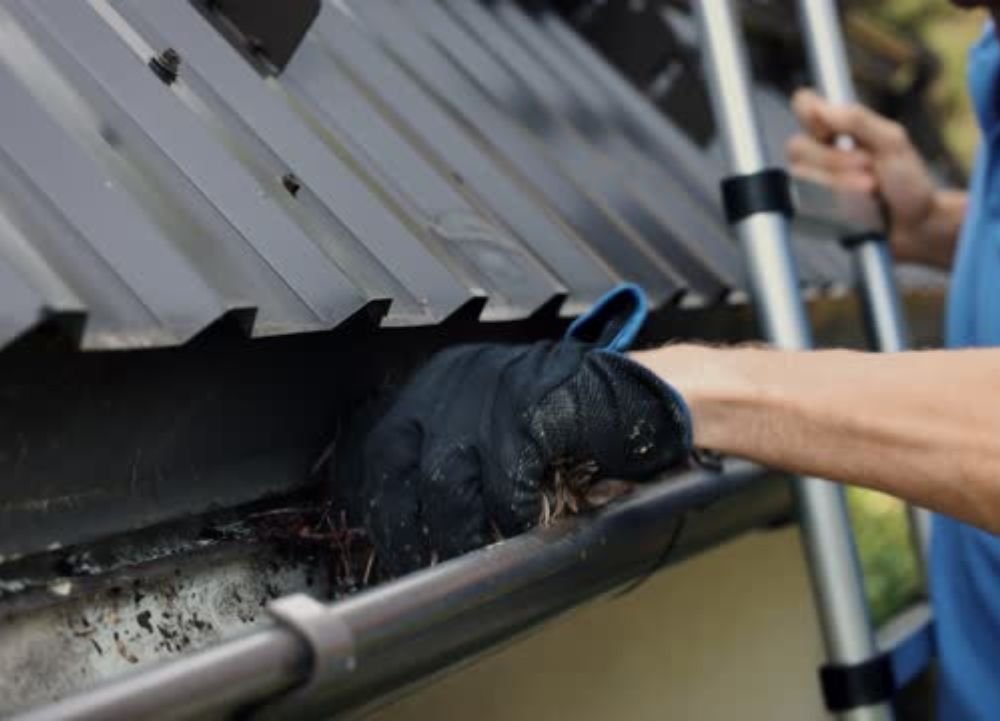
Regular gutter maintenance is an essential step in preventing the need for costly repairs. By scheduling regular gutter cleaning, you can identify issues early, prevent water damage, and prolong the lifespan of gutters.
Inspect and Repair
The most common places to inspect for damages in gutters are the seams, hangers, downspouts, and corners. It is more likely that leaks, corrosion, and damage will occur in these areas. Routine inspections should include thorough checks of these areas and put immediate attention to any damage as soon as it appears.
Several factors can cause cracks in gutters, including exposure to extreme temperatures, impact from falling debris like branches, and rust. Rust is a common problem in gutters, especially in metal gutters exposed to humidity and rainfall. Over time, exposure to moisture and oxygen can cause metal gutters to oxidize, leading to rust formation. Rust can weaken the gutters and cause holes to form, leading to leaks.
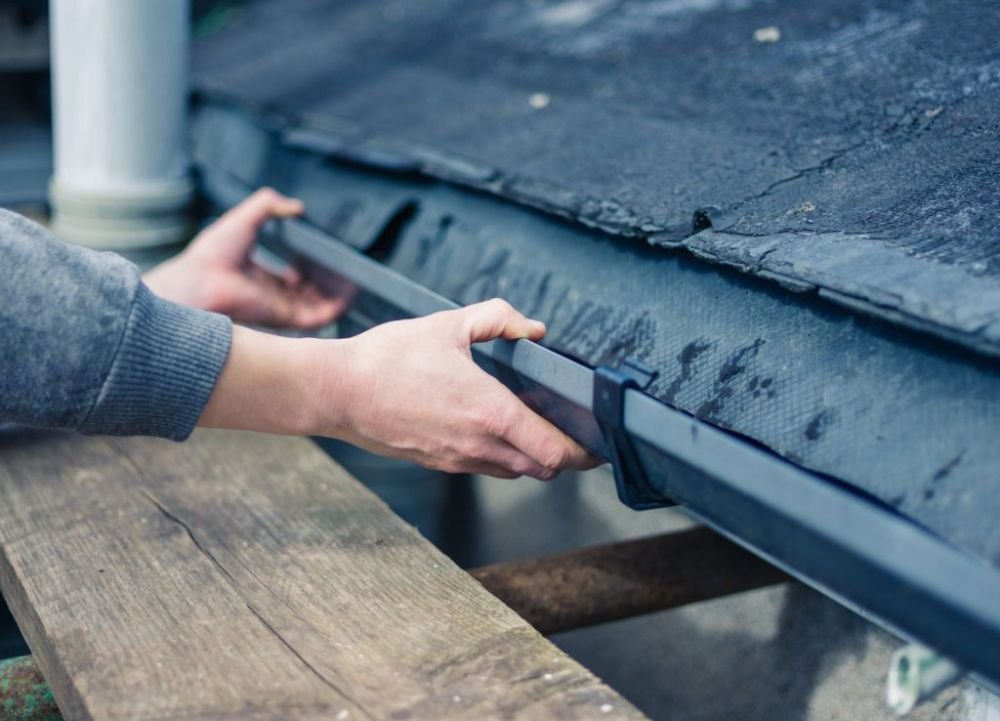
Various factors determine the sealant’s lifespan, including its type, weather conditions, and its wear and tear. Gutter sealants typically last six months to a year, depending on environmental conditions and sealant quality.
Routine inspections are instrumental in identifying gutter damage, preventing it from worsening, and reducing the need for costly repairs. The most common places to inspect for damage are the seams, hangers, downspouts, and corners. Cracks in gutters can be caused by exposure to extreme temperatures, impacts, and rust formation. The longevity of sealants for gutters can vary from six months to a year, depending on several factors.
Check Downspouts
Downspouts can bring about several problems if not properly maintained. One common issue is clogging, where debris such as leaves, twigs, and other materials accumulate and hinder proper water flow. Clogged downspouts can result in overflowing gutters, water backup, and potential water damage to the foundation, walls, and landscaping around the house. Another problem can occur when downspouts are not connected properly to the gutters or if there are leaks in the connections, which can lead to water seepage and damage to the building’s structure.
To minimize or eliminate these problems with downspouts, regular maintenance is essential. Here are some steps to follow:
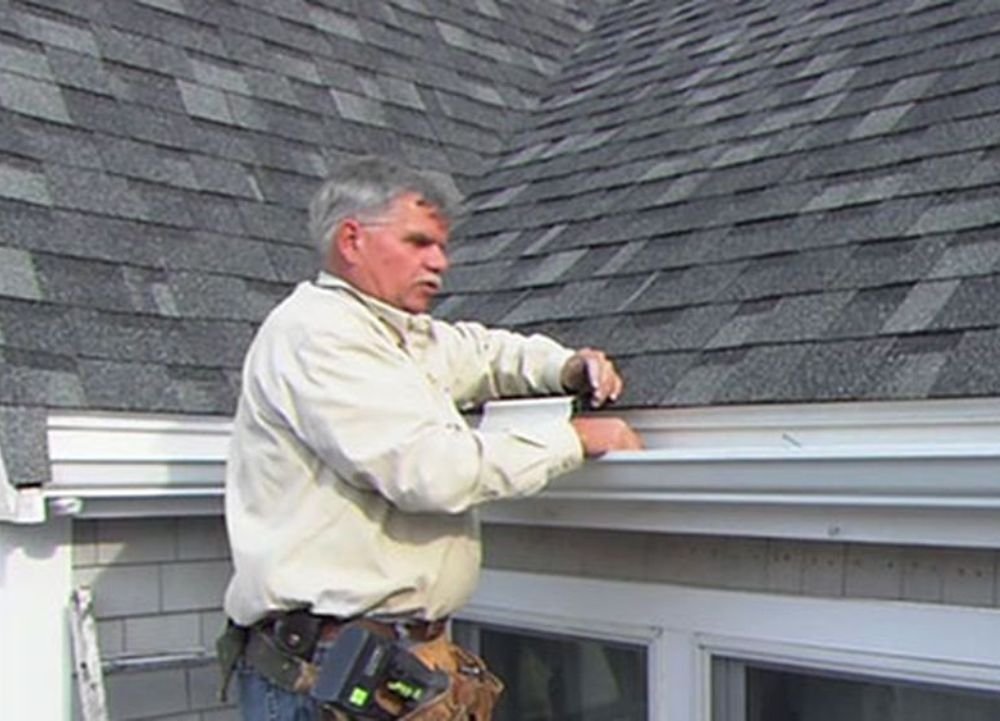
Check downspouts regularly to ensure they are clear of debris. Use a long narrow handle to push out any obstructions, such as leaves, twigs, or dirt balls, that might be blocking the channel.
Properly connect downspouts to the gutters to ensure a seamless flow of water. Check for any leaks or loose connections and address them promptly.
Use a hose to flush out any clogs or obstructions in the downspouts. Start from the top of the downspout and work your way down to ensure thorough cleaning.
Consider installing gutter guards or screens to help prevent debris from entering and clogging the downspouts in the first place.
By following these maintenance steps, you can minimize or eliminate problems with downspouts and ensure proper water drainage from the gutters, reducing the risk of water damage to your home or property.
Reinforce Support
Gutters can become sagging or misaligned under certain circumstances. One common reason is the accumulation of trapped water and debris, which can weigh down the gutters and cause them to sag. Another reason is improper installation or lack of proper support, such as insufficient hangers or brackets being used to attach the gutters to the fascia board.
To address sagging or misalignment, reinforcing the gutters with additional hangers or brackets can provide proper support and alignment. By adding extra support, the gutters are less likely to sag and maintain their proper position. It depends on the fundamental issue of whether this solution will be effective or not.
While reinforcing gutters with additional hangers or brackets can help alleviate sagging or misalignment, it may not be a permanent solution if the underlying problem persists. The solution to any gutter problem includes identifying and addressing the root cause of the issue. This may involve clearing debris, adjusting the gutter pitch, or seeking professional assistance to determine the best course of action.
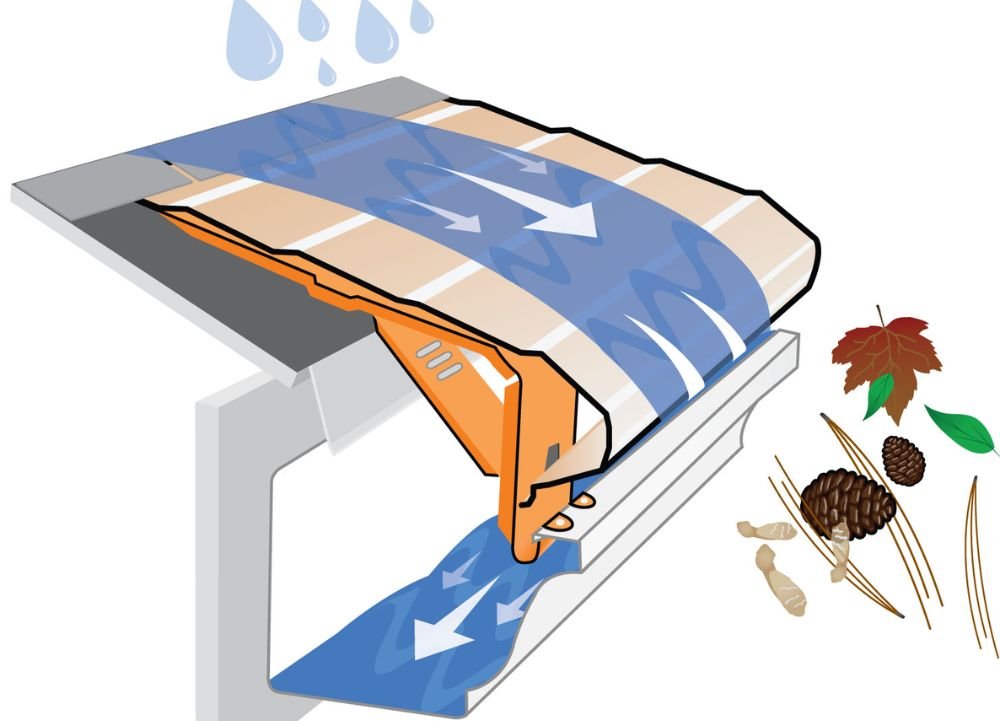
Gutter Guards
You can prevent clogged gutters by taking several steps. One approach is to install gutter guards, which are protective coverings that prevent debris from entering and clogging up the gutters. Gutter guards are available in a variety of styles, including mesh screens, foam inserts, and reverse curve systems, each designed to provide specific benefits.
Mesh Screens
Mesh screens are made from a fine metal or plastic mesh that allows rainwater to flow through while preventing debris from entering the gutters.
Different professional roofers may have different preferences when it comes to gutter guard mesh screen specifications. However, some general recommendations for mesh screens include using a small mesh size of about 1/8″ or less to prevent small debris and seeds from entering the gutters. The screen material should also be durable and withstand harsh weather conditions like rain, snow, and wind.
Another important specification is the type of mesh screen. According to professional roofers, solid covers or hooded gutter guards that have a mesh for water filtration perform better in terms of preventing clogs than the screens that are installed over the gutters. This is mainly because solid covers provide full gutter protection and prevent leaves, twigs, and other debris from entering the gutter system.
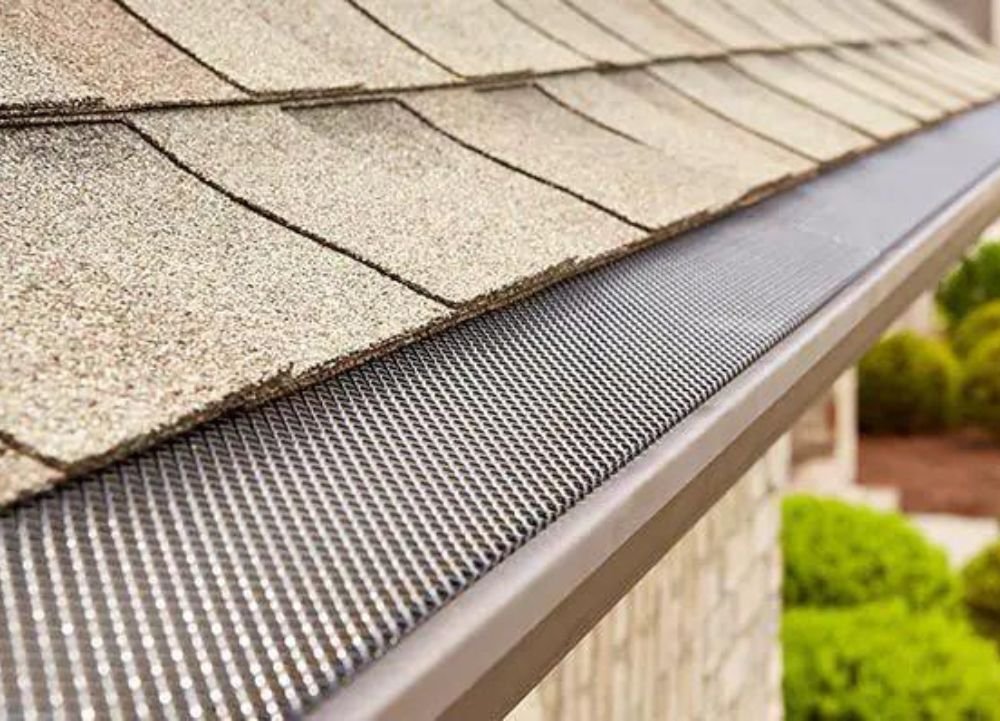
Lastly, it is essential to choose a gutter guard mesh screen that is easy to install and maintain. Some mesh screens are available in pre-cut lengths and can be easily attached to the gutters using clips or screws. Therefore, it’s important to research different gutter guards’ installation processes and maintenance requirements before making a decision.
Professional roofers recommend using small mesh size, durable material, and solid covers or hooded gutter guards while considering the ease of installation and maintenance when choosing a gutter guard mesh screen for preventing clogged gutters.
Foam Inserts
Foam inserts are designed to fit inside the gutters and act as a barrier between the debris and the water flow.
Foam inserts for gutter protection are designed to fit inside the gutters and act as a barrier to prevent debris from entering while allowing water to flow through. To ensure durability and specifications, there are a few factors to consider:
Material: Most gutter protection inserts are crafted from polyurethane foam. The quality and density of the foam can vary among different brands and models. Foam inserts with high density have a greater durability and longevity than foam inserts with low density.
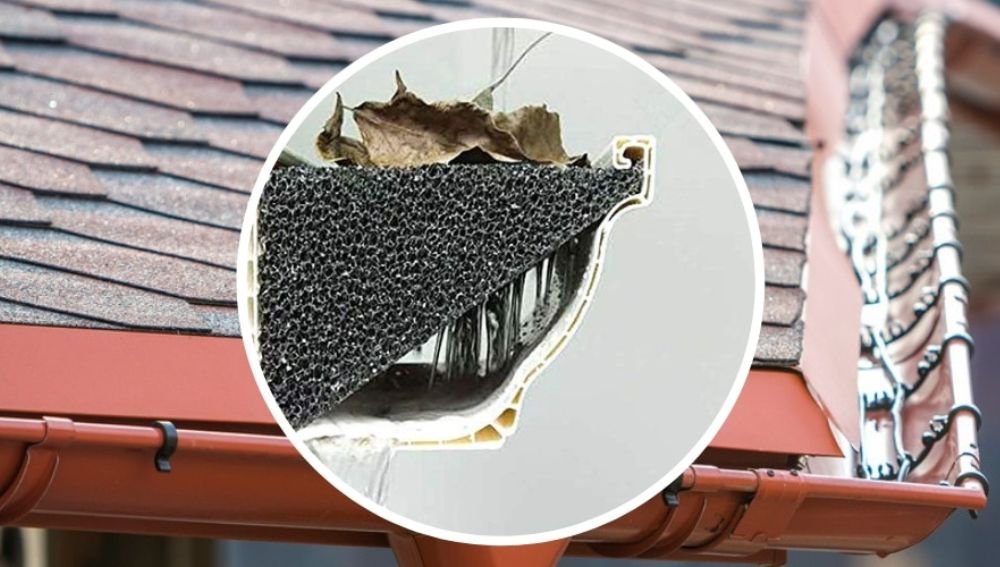
Size and Fit: Foam inserts should be cut to fit the specific dimensions of your gutters. Look for foam inserts that come in a size that matches your gutter width. The foam inserts should fill the entire width of the gutter and sit snugly to ensure optimal performance.
Water Flow Capacity: Efficient foam inserts should have a design that allows water to flow through freely while trapping debris. Look for foam inserts that have open-cell designs or specific water channels to promote effective water drainage and prevent overflow.
In terms of durability, high-quality foam inserts can last for several years. Several factors can influence their lifespan, including climate, sunlight exposure, and debris levels in your geographical area. Regular maintenance, including cleaning the foam inserts periodically to remove accumulated debris, can help prolong their lifespan.
Efficiency can vary depending on the design and density of the foam inserts. Foam inserts with higher foam density and specialized water channels tend to be more efficient at allowing water to flow through while blocking debris. However, it’s worth noting that foam inserts may not be as efficient as solid covers or hooded gutter guards in extreme situations, such as heavy downpours or large volumes of debris.
You should consult a professional gutter installation expert company to identify what type of gutter protection is most appropriate for you. They can provide guidance based on factors such as your location, climate, gutter style, and personal preferences.
When considering foam inserts for gutter protection, look for high-density foam, a proper fit, and features that promote effective water flow. Regular maintenance is key to preserving their longevity. It’s also essential to consider the specific needs and conditions of your gutters and consult with professionals for personalized recommendations.
Reverse Curve Systems
Reverse curve systems force water to cling to the gutter’s curve while debris falls to the ground, preventing clogs.
Keeping your gutters clean, free of debris, and fully operational in our Wisconsin climate requires a well-designed, complete gutter system. It’s simple enough to add gutters to your eaves, but an investment in a product like Gutter Helmet can help to protect that gutters system for years. Gutter Helmet is an innovative product that uses a reverse-curve design that utilizes the principles of surface tension and gravity. There is finally a product on the market that allows you to kick your feet up on the weekend instead of risking it all fishing old leaves out of your gutters. That product is called Gutter Helmet.
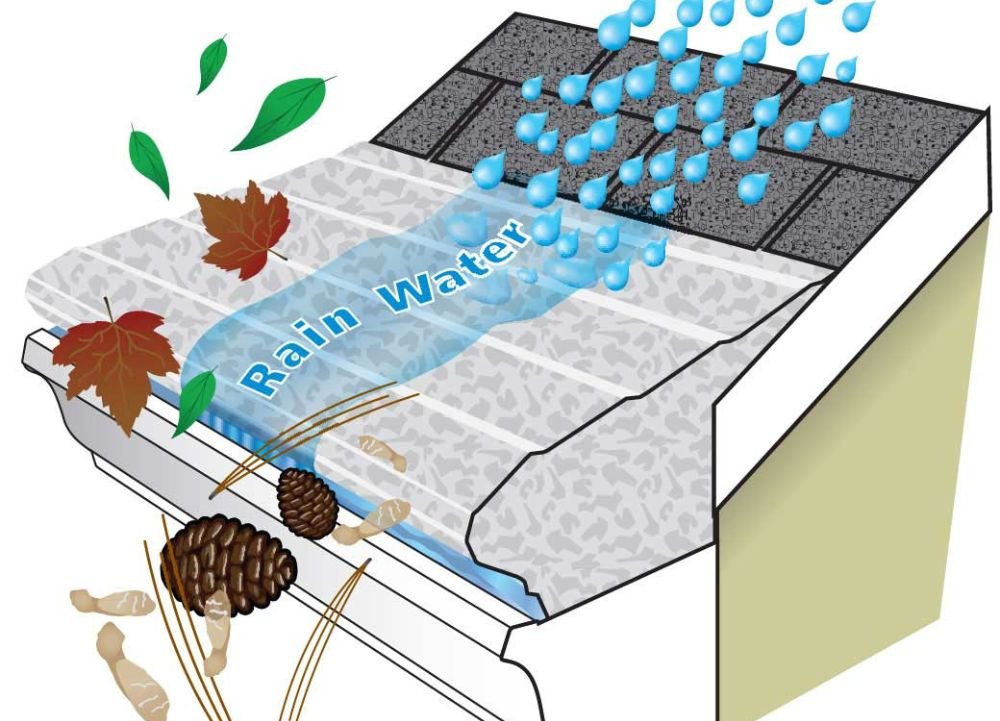
Gutter Helmet Design
The Gutter Helmet product includes a textured surface which rainwater clings to as it flows downward. The cover has a curved nose that extends past the edge of the gutter, yet it enables rainwater to flow naturally into the gutter system thanks to water surface tension. Gutter Helmet’s reverse-curve gutter guard system offers four primary benefits.
- Prevents debris clogs
- Ensures open channel rainwater runoff
- Prevents damage to the roof, gutter, and structure of the home
- Long-lasting, Low-maintenance
- Effective Debris Shedding
When the rainwater reaches the edge of the Gutter Helmet system, it goes through a small gap between the helmet and the gutter. This stops debris, leaves and objects from entering gutters and clogging gutter systems. Only water can pass through this gap. The debris falls to the ground or blows away, instead of clogging up the gutters. This also minimizes clean-up after storms or other natural events where a lot of leaves, twigs, and debris typically fall on roofs and gutters.
The Gutter Helmet system can handle over 22 inches of rain per hour without overflowing, which is twice the amount of the highest precipitation rate ever recorded in Madison or Milwaukee.
Precision Installation
Known for quality products and service, Innercity Roofers is the premier installer of the Gutter Helmet gutter cover product. During the installation of your new Gutter Helmet system, our technicians will clean out your existing gutters carefully. We also are careful about any mess they create during the process and always seek to leave your property in better shape than when we arrived. Gutter Helmet system installers follow methods approved by major roofing manufacturers to be sure that your roof warranty remains completely intact.
Another step to prevent clogged gutters is to conduct regular maintenance. This includes cleaning the gutters at least twice a year to remove debris and avoid clogs. Other maintenance measures include installing downspout extenders to direct water farther away from your home’s foundation and trimming overhanging branches near the gutters to prevent leaves and branches from falling into the gutters.
To prevent clogged gutters you can install gutter guards, conduct regular maintenance, and take measures such as installing downspout extenders and trimming overhanging branches near the gutters.
Professional Inspection
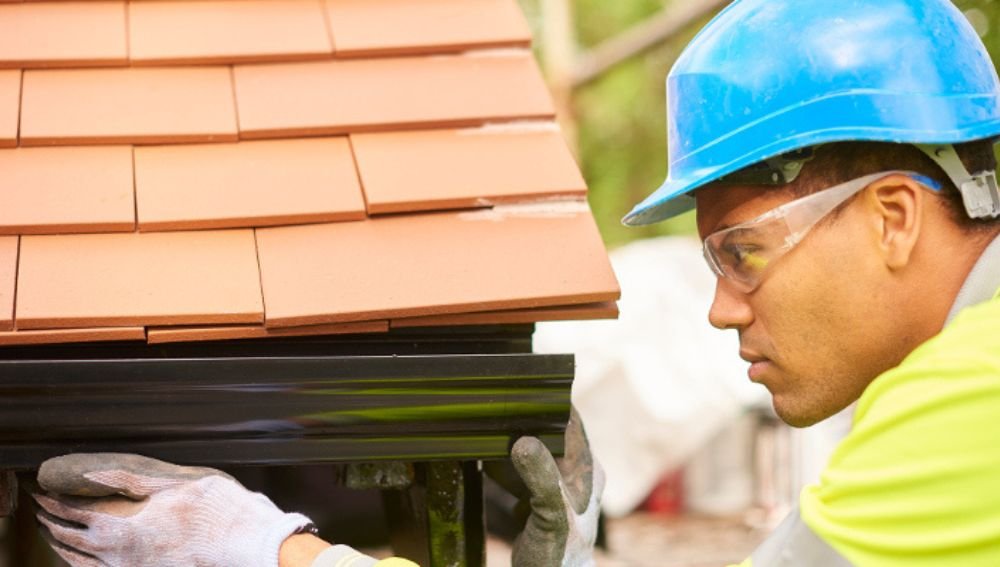
A professional gutter inspection is important for several reasons. First and foremost, it helps to ensure that your gutters are functioning properly and effectively[1%5E]. During a professional inspection, the gutter repair service will assess the overall condition of your gutters, checking for any signs of damage, wear and tear, or improper installation. They will also evaluate the functionality of the gutters, ensuring that water is flowing freely and being directed away from your property as intended.
One of the key benefits of a professional gutter inspection is the ability to identify hidden issues that may not be easily noticeable to homeowners. These hidden issues can include:
Clogs and debris buildup: Over time, leaves, twigs, and other debris can accumulate in your gutters, causing clogs and obstructing the flow of water. A professional inspector can identify these blockages and recommend proper cleaning or gutter maintenance.
Leaks and corrosion: Gutters can develop leaks or corrosion due to exposure to the elements or improper installation. A professional inspector can detect these issues and suggest the necessary repairs or replacements.
Improper slope or alignment: If your gutters are not properly sloped or aligned, water may not flow smoothly and could potentially cause water damage to your home’s foundation or landscape. A professional inspector can assess the gutter’s slope and alignment and provide recommendations for corrective measures.
Damage or deterioration: Gutters can experience damage or deterioration over time, especially in regions with extreme weather conditions. A professional inspector can spot signs of damage, such as sagging, cracks, or detached sections, and advise on the appropriate repairs or replacements.
By having a professional inspect your gutters, you can ensure that any hidden issues are identified and addressed promptly, reducing the risk of costly water damage and maintaining the integrity of your gutter system.
Conclusion
Maintaining a well-operating water channel system is essential to protect your home from water damage and costly repairs. By understanding the importance of gutter repair, addressing common problems in a timely manner, and implementing routine maintenance, you can effectively manage rainwater and safeguard the structural integrity of your home. A proactive approach to keeping your gutters in check is a decisive factor in ensuring the long-term working condition and longevity of your home’s water gutter system.